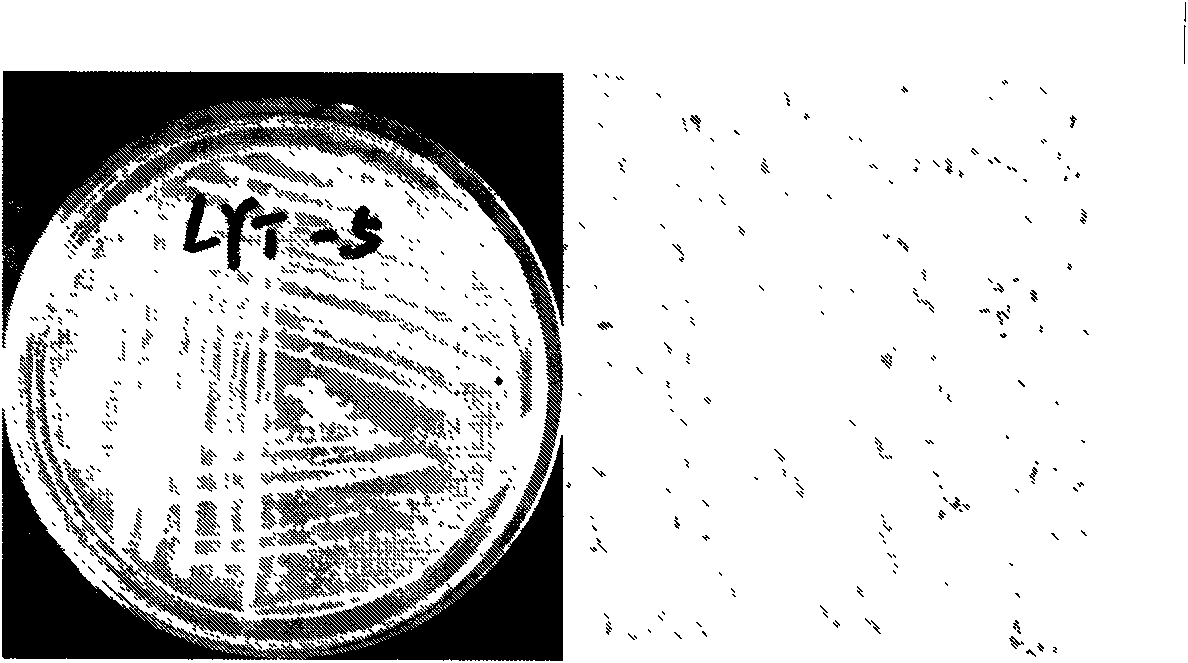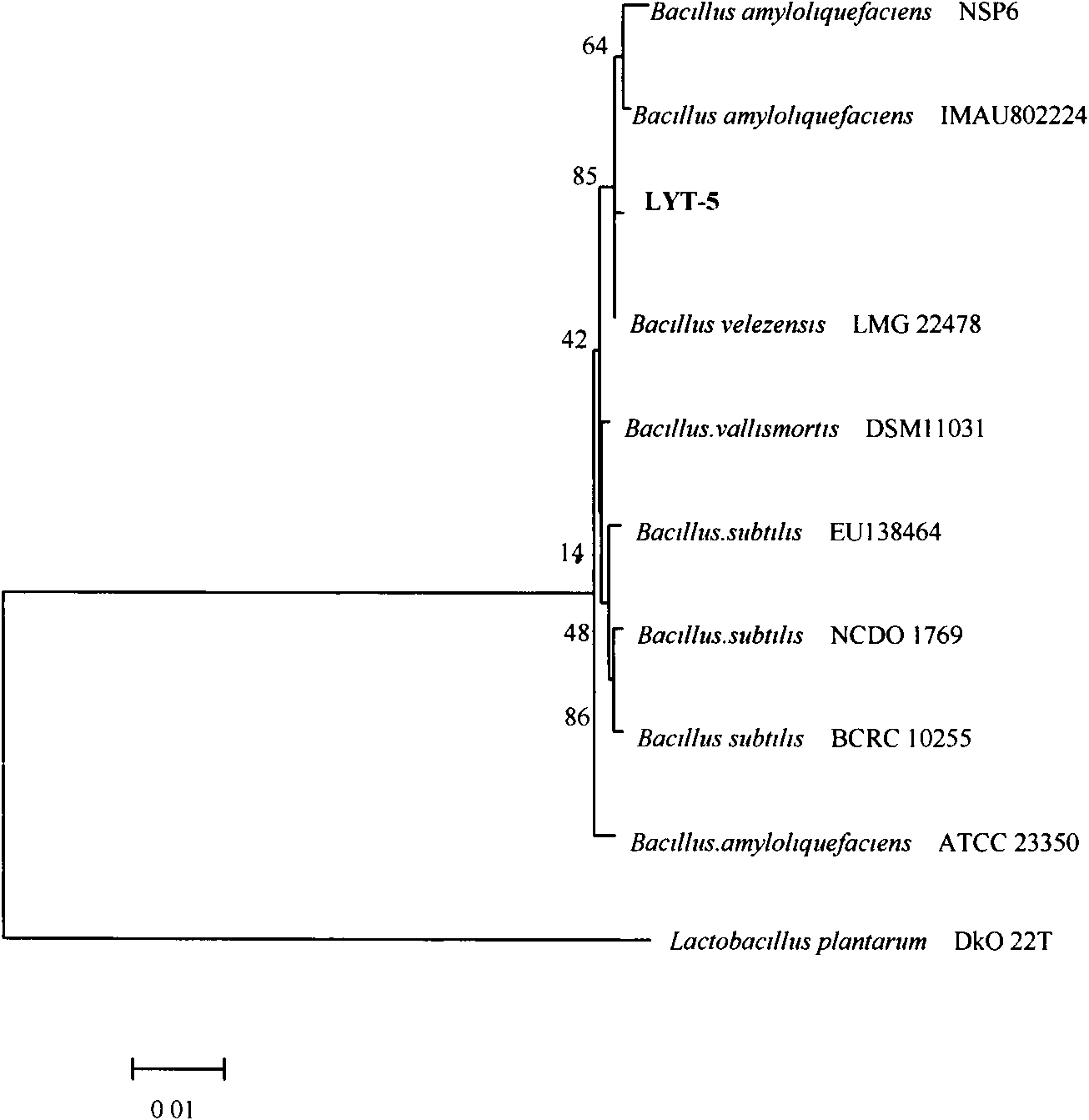A kind of Bacillus velesi and its application in the antagonism of tomato fusarium wilt
A technology of tomato fusarium wilt and bacillus, applied in application, bacteria, fungicides and other directions, can solve problems such as yield reduction, achieve high application value, increase crop yield, and reduce the use of pesticides
- Summary
- Abstract
- Description
- Claims
- Application Information
AI Technical Summary
Problems solved by technology
Method used
Image
Examples
Embodiment 1
[0020] Example 1: Isolation, screening and identification of Bacillus velezensis CGMCC No.4992
[0021] (1) Isolation and screening of antagonistic bacteria
[0022] Gradient dilution separation method: Weigh 10g of tomato rhizosphere soil sample and put it into a triangular flask filled with 90mL sterile water and glass beads, shake for 20min and then let it stand for 20-30s, which is 10 -1 diluent, and then use the gradient method to dilute to 10 -2 to 10 -6 diluent. Take 0.1mL of each dilution (10 -3 、10 -4 、10 -5 、10 - 6 ) were spread on the LB medium respectively, cultured at 37°C, and after the isolates grew out, the colonies grown on the plate were streaked, separated and purified, and finally the slant was streaked and stored for later use.
[0023]Plate confrontation method to screen antagonistic bacteria: The plate confrontation method was slightly modified, and the pathogenic bacteria of tomato wilt was activated on the slope of PDA medium. After the hyphae ...
Embodiment 2
[0039] Embodiment two: the growth factor of Bacillus velezensis CGMCC No.4992
[0040] Refer to the following methods, but the specific growth factors should be determined according to the characteristics of Bacillus velezensis CGMCC No.4992 provided by the present invention.
[0041] The strain LYT-5 was inoculated on LB medium containing different concentrations of salt (NaCl), antibiotic (ampicillin) and pH, and cultured in a 30°C incubator for 14 hours. Then the strain LYT-5 was connected to the LB medium, and placed in 4°C, 10°C, 15°C, 20°C, 25°C, 30°C, 35°C, 40°C, 45°C, 50°C, 55°C, 60°C, respectively. Cultivate in an incubator. The results are shown in Table 2.
[0042] It can be concluded from Table 3 that strain LYT-5 is the most suitable growth factor.
[0043] Table 2: Effects of temperature, pH, salt, and antibiotics on the growth of strain LYT-5
[0044] temperature(℃)
Embodiment 3
[0045] Embodiment three: the antagonistic ability of Bacillus velezensis (Bacillus velezensis) CGMCC No.4992 fermented liquid to tomato Fusarium wilt
PUM
 Login to View More
Login to View More Abstract
Description
Claims
Application Information
 Login to View More
Login to View More - R&D
- Intellectual Property
- Life Sciences
- Materials
- Tech Scout
- Unparalleled Data Quality
- Higher Quality Content
- 60% Fewer Hallucinations
Browse by: Latest US Patents, China's latest patents, Technical Efficacy Thesaurus, Application Domain, Technology Topic, Popular Technical Reports.
© 2025 PatSnap. All rights reserved.Legal|Privacy policy|Modern Slavery Act Transparency Statement|Sitemap|About US| Contact US: help@patsnap.com



